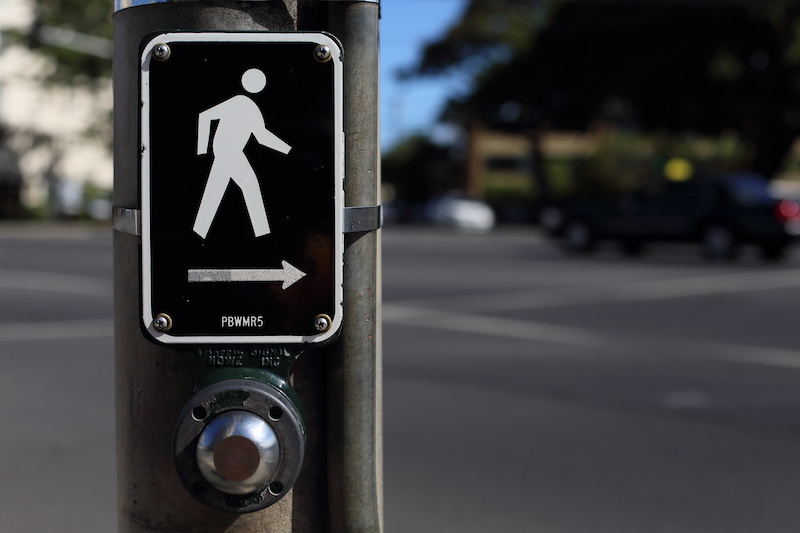If you are injured while walking or running because of another party’s negligence or recklessness and you suffer injuries, you can file a lawsuit for damages. These accidents often occur when a car or bicyclist is involved in a collision with a pedestrian. A lawsuit requires proving fault to be eligible for compensation for your injuries.
There can be variety of pedestrian incidents that need further investigation.
From 2017 to 2021, over 2,700 traffic accidents in Hawaii involved pedestrians.
Including distracted driving, speeding, and failure to yield by a car, truck, motorcycle, bicycle, bus, or subway
Inside a construction area.
Including accidents from uneven sidewalks, potholes, ice, snow, or debris.
Of a bicycle or scooter.

Specific legal criteria must be met to have a valid pedestrian injury lawsuit, which includes five or six required elements:
The plaintiff must establish that the defendant owed a duty to exercise reasonable care to avoid causing harm to others on the road.
The plaintiff must show that the defendant breached this duty of care, such as by violating traffic laws, driving recklessly, or not maintaining private/public property.
There must be a direct link between the defendant’s breach of duty and the plaintiff’s injuries. This requires demonstrating that the defendant’s actions, or lack of actions, directly caused the accident and subsequent injuries.
The plaintiff must have suffered actual damages as a result of the accident. These can include medical expenses, lost wages, property damage, pain and suffering, and other related costs.
The plaintiff must prove that the defendant’s actions, or lack of actions, were negligent and the defendant failed to exercise reasonable care under the circumstances.
In some cases, the defendant may argue that the plaintiff bears some responsibility for the accident. Damages can be reduced proportionally based on the plaintiff’s degree of fault, if any.
The statute of limitations is the length of time you have to file a lawsuit after an accident. It can vary by state, but in Hawaii, you have two years after the date of the injury to file a pedestrian injury lawsuit. There may be some exceptions to the statute of limitations if the full extent of the injuries is discovered at a later date.
In pedestrian injury cases, clients may be eligible to recover multiple types of damages, including:
This includes medical expenses, lost wages, including future earnings from a long-term or permanent disability, and applicable property damage to the plaintiff, such as clothing, electronics, or accessories.
This includes compensation for the physical pain and emotional suffering, loss of enjoyment of life due to the injuries, and loss of consortium, which includes the negative impact of the plaintiff’s relationship with their spouse or family members because of the injuries.
If a case is particularly egregious or malicious, punitive damages may be awarded to punish the defendant and deter similar behavior. These damages are less common and require proof of intentional misconduct or gross negligence.

A lawsuit cannot reverse your injuries. However, the legal process can help you find justice and heal while ensuring you are financially sound in the future. After an initial consultation, our experienced team will provide an honest assessment of whether your case has merit. If we can help, we assess all the evidence so you can receive fair compensation for the full extent of your loss.
Find quick answers to common questions about preparing for a pedestrian injury consultation.
In Hawaii, you have two years after the date of the accident to file a claim. There may be some exceptions to the statute of limitations if the extent of your injuries were not immediately known.
If you believe your accident in Maui was preventable, you need to file a lawsuit with a lawyer in Hawaii.
Compensation can vary based on the severity of your injuries, the impact on your daily life, and the degree of fault. Our expert legal team can help you determine the value of your case once we have more information.
No, jaywalking – or crossing a street outside of a crosswalk when a crosswalk is available – is illegal and pedestrians can be fined for jaywalking.
You should always prioritize your health and safety and seek medical attention first. If you can take photographs of the scene, collect contact information of witnesses, and document your injuries, that is extremely helpful. However, our legal team can also help with collecting evidence from police reports, witnesses, and more to advocate on your behalf.